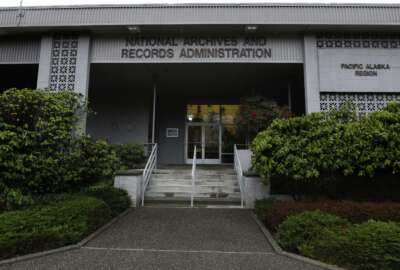Sponsored by Canon
Tennessee Valley Authority takes on NARA’s digitization mandate
Records are made up of a variety of formats. What were primarily reports on paper make up about 70% of what is generated at TVA.
After June 2024, the National Archives and Records Administration will no longer accept analog records into their collections. Agencies across the country are tasked with transitioning paper and physical records into digital formats. One of those agencies, the Tennessee Valley Authority, has already taken significant steps to meet those requirements.
The Tennessee Valley Authority, a federally owned electric utility corporation, provides services to Tennessee, along with portions of Alabama, Mississippi, Kentucky, Georgia, North Carolina and Virginia, a population of approximately 10 million customers. With that mission comes the responsibility to collect, maintain and provide public access to an enormous and ever-growing number of records and documents like annual and quarterly reports, bond offerings, notice of reservoir levels, maps, charts, models and other general information.
“Over the last five years, we’ve consistently generated around five million electronic records a year. That’s just under about 10 terabytes of records. Now overall, on any given day, we manage around 200 million temporary and permanent records that are in various stages of the records management lifecycle,” said Rebecca Coffey, Tennessee Valley Authority agency records officer and senior manager of enterprise records, on Federal Insights – Records Management.
Temporary and permanent records
The TVA, like most agencies, manages a collection of temporary and permanent records. The process for disposition of records is public to provide stakeholders continued access to where they are in the records management lifecycle.
“An agency will prepare a proposed schedule, send it to their designated archivist. Once we get an informal nod that this looks good and it aligns with other agencies, then those schedules get published in the Federal Register, and the public and other federal agencies have a chance to comment on them.” Coffey said
Records are made up of a variety of formats. What were primarily reports on paper make up about 70% of what is generated at TVA. The other 30%, considered mixed media, consists of text messages, emails, instant message chats, maps, photographs and other data streams that are generated as TVA conducts its work, like monitoring river levels.
“When they go to NARA for the final approval, they will decide the time frame. If the records have significant value, historical value, whether they are telling the story of TVA or the impact in the national story, the federal records will become permanent, which means that at a designated time, they will get sent to NARA. We will turn over ownership of those records to the National Archives,” Coffey said, on the Federal Drive with Tom Temin. “We obviously have different plans for how we’re going to manage those records, and it changes every year. With new technology comes new formats.”
Digital Transformation
“NARA is not focused so much on ‘have you digitized everything by this deadline,’ as much as it is ‘what is your plan,’ because obviously, across the federal agencies we don’t all have the resources to be able to implement it immediately,” Coffey said.
Agencies must also contend with digital records organization. Once transformed from paper to a digital entity, documents must also be encoded with metadata to make it searchable and easily retrieved when needed. NARA works as a partner for agencies in the digitization process. In the past, most records could be counted on to be a printout, but that has changed. Following directives from NARA and the Office of Management and Budget in 2011 and beyond, requiring an overhaul of records management, TVA has been operating under a series of initiatives.
“I’m really proud of the work our TVA team is doing. This has to do with some of our cultural resource records, our mapping and aerial photographs. We have a collection that goes back 100 years, and obviously those are not going to be the easiest things to digitize. We have our project: We are processing over a million frames of film and about 300,000 hard-copy maps. And what the team has done is they’ve thought about not just how we use them today, but how we could possibly use them in the future,” Coffey said.
Copyright © 2024 Federal News Network. All rights reserved. This website is not intended for users located within the European Economic Area.
Michele Sandiford is a digital editor at Federal News Network.






